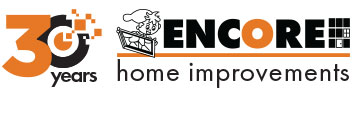Choosing the right Low E Glass for You!

Sometimes sales-people will mislead consumers, not because they want to, but because they too have already been misinformed with erroneous information. There is also a tendency on the part of sales-people to promote the products they sell as the “best possible” for all homeowners in all situations. Of course, this is not the case or, why would there even be options!
In Canada, after years of research, a system was designed to measure window’s energy efficiency that was appropriate for our climate, which has significantly more cold (heating) months than warm (air conditioning) months. This is the ER system and results in a single comparable number between competing window products. It does this by taking into account both the heat gain (SHGC) and heat loss (U) through a window over an average heating season. The higher the number, the lower the heating bill. It is based on an average orientation in an average Canadian location. It doesn’t work well if your cooling bill is bigger than your heating bill. It also doesn’t take into account the comfort level of a specific home or location as a factor, just heating issues.
The questions include, what is the value of passive solar heat? What about glazing by orientation? Some sales-people have been trained to believe that in your home’s case, you aren’t going to benefit from passive solar. You are special! You have trees… clouds… the wrong orientation…no sun at night. It is all so persuasive.

However, extensive government and third party testing has documented that passive solar will play an important role in heating your home! There is no question that the south facing windows should have the highest possible ER. That is they should be selected to be net ‘gainers’ over the heating season to the strongest practical extent. In reality this means a selecting a high solar gain low e glass.
These days you’d be hard pressed to find a window for sale with regular clear glass. Windows have glass with a coating that reflect heat call Low E. Simply, there are two types of Low E. Both prevent a great deal of radiant heat loss but one prevents about 10 to 15% more. The other type, although it is slightly less effective at radiant heat control, allows more passive solar heat through. The first could be labeled a solar shield Low E and the second a Solar Gain Low E, for simplicity.
Solar gain low E does experience a higher solar gain than solar shielding low E in the summer as well as the winter. However, in northern latitudes, south-facing glass experiences its biggest gains in the winter, not the summer. In the summer months the sun is high in the sky and south facing glass experiences about half the solar gain of the winter months. This means summertime solar gains are relatively modest and possible to further reduce with overhangs or other shading strategies. After all, that maple tree in your front yard offers shade from leaves in summer, but not in winter!
Summertime overheating is more likely to come from west facing glass. These windows typically benefit from a solar shading low E. Since a northern wall has very little opportunity to benefit from free solar heat, it also would benefit from the better radiant control of the solar shield style of low E glass.

The real question for homeowners becomes, is the financial benefit of free solar heat in winter more of a personal benefit for me than the improved comfort of reduced heat in the home in summer? Do I have efficient heating and cooling systems so that comfort is not an issue, only, which will save more money on my annual energy bill? Do I have significant discomfort in summer and, even knowing I will be spending a little more for heat in winter, prefer to minimize heat gain in summer months? These are individual choices for each homeowner and not well served by blanket statements from sales people.

There is a newer category of Low E glasses that takes eliminating passive solar heat to new extremes. These glasses can reduce your potential for passive solar by approximately 50% from solar gain glass. This has so disturbed the Canadian government that, in their ENERGY STAR® program, they are establishing minimum Energy Ratings to prevent windows using these types of glasses for qualifying for an ENERGY STAR® designation purely based on their U/R insulating values. The bottom line is, in Canada, passive solar Low E is an essential contributor to lowered energy usage, but, each home and each homeowner needs to make an informed choice regarding the balance between summer comfort and winter energy savings.
Written by Philip Lewin
For more information contact Encore Windows your Toronto Window Company


